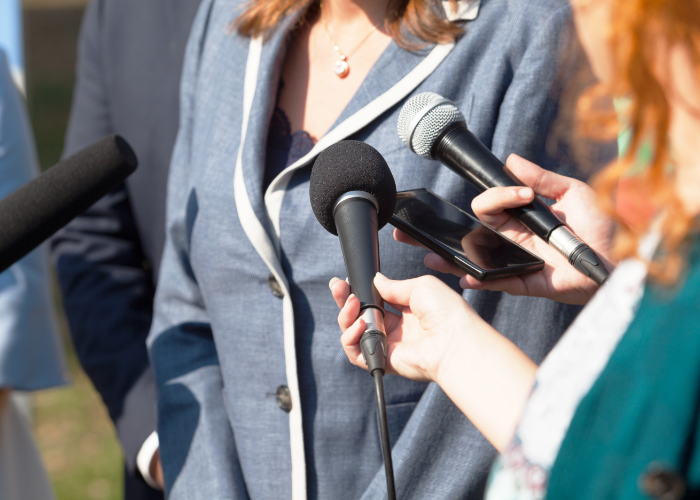We love media training – there’s nothing better than seeing a nervous media newbie (or even a veteran looking for a skills update) feeling confident and ready to own their interviews. Here are our top five tips.
1. It’s all about you
The very best thing you can do to maximise your media opportunities is to understand how to tell your own story. It may seem obvious, but there’s an epiphanous moment in every training program we run, where participants recognise how important it is to really, truly understand what you have to say. If you can answer these questions, you’re on the right track.
- Who are you? Not the name, age, where-I-went-to-school stuff, the background that is directly relevant to what you want to talk about with media.
- What do you do? Don’t get lost in the high level language here. It’s great that you want to save penguins or unleash creativity or empower teams to go further. But what do you actually do? It’s amazing how often people forget the simple, succinct explanation that helps a reporter understand your story. The challenge is knowing how much detail is enough.
- Why do you do it? This is partly about what drives you, but it’s also about your goals and impact. “I want to save penguins” is never going to be as compelling as “I want every Australian child to have 15 minutes of formal education about the importance of penguins”- get tangible.
2. Actually, it’s not just about you
The story you tell needs to be flexible. What will suit some media and their audiences will be irrelevant for others. Your core story is always the same, but the elements you bring forward will change. For example, trade media is the perfect place to get into the technical detail of that new piece of equipment you’re bringing to market, but morning TV is going to want something fun or quirky.
3. It’s only an opportunity if it gets you closer to your goal
Media for media’s sake is a waste of your time, with the one exception of using it for practice if you are new to interviews. In general, you should be very clear on what your driving business or personal goal is, and only pursue media that will help you get there. The interviews you say no to are as important as the ones you say yes to.
4. Failure to prepare is preparing to….you know the rest
We provide all our training participants with a briefing template and really encourage them to take some time before an interview to set themselves up for success. Things that should be on the briefing sheet you create for yourself include:
- Details of the journalist and outlet, the time, relevant phone numbers – things you don’t want to be fumbling for at the last second
- A reminder of what the interview will be about, what angle the journalist is leaning towards and what you would like to focus on
- Three key messages (remembering you don’t have to say everything in every interview). For each message you need at least one proof point – a statistic, example, case study, anecdote, something to give credibility to your messages
- The one quote you really want them to use. Writing it down will help you remember to say it
- Any words or phrases you are likely to stumble on
5. It’s okay to mess up
Journalists are people. They want your story and they will usually do what they can to help you tell it. If you’re not a politician or a con artist, they are probably not chasing a gotcha moment. Don’t lose sleep worrying about messing up a point, getting a detail wrong or being nervous. If you need a second run at a question, ask for it. If you give the wrong info, follow up with a correction.
If you’re looking for friendly, encouraging and expert media training for you or your team, let us know.
Kendi Burness-Cowan

